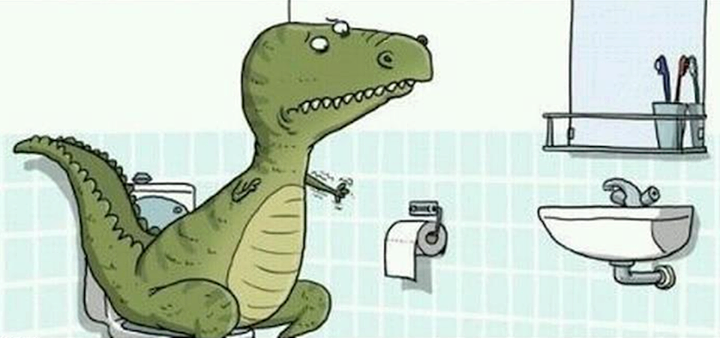For those of you who may not have been aware, I was fortunate enough to recently publish a dinosaur book for kids, complete with build-it-yourself pop-out dinosaurs. I’ve recently published an article in The Guardian about it, which features much of the great artwork by Vladimir Nikolov. It’s all about some of the perhaps less well-known dinosaur facts that feature in the book, so enjoy!
Your poop or mine?
Back in the Mesozoic, lavatories probably didn’t exist. In fact, dinosaurs and other animals were probably pretty poorly mannered and just pooped wherever they felt like. But what or who cleaned up after them? In modern biomes, poop is decomposed by insects and bacteria of all breeds, and actually forms quite an important part of energy flow within ecosystems. But was it the same million of years ago during the reign of the dinosaurs?
Imagine a natural world without decomposers. Carcasses would litter landscapes, and there’d be a neat smattering of faeces decorating everything like jam. Humans have adapted beyond this need for decomposers by creating the loo – dinosaurs weren’t so technologically efficient, and one can only imagine the issues T. rex would have trying to flush anyway.
Was the diversity of feeding styles in giant turtles a key to their suckcess?
Sometimes, it can be difficult to figure out how ancient organisms used to eat. Part of the problem is that we can never actually see extinct animals eating (until we invent time-travel.. *taps fingers impatiently at physicists*), and often it can be hard to work out how something ate based just on its anatomy. Sometimes though, the fossil record chucks up something truly spectacular, and gives us amazing insight into the spectacular diversity of ancient life.
Let’s roll it back a bit.
Dwarf crocodiles in Munich
My PhD consists of two parts. The first is investigating the dynamics of biodiversity across the Jurassic/Cretaceous interval about 145 million years ago. I want to see if when we consider the biases of the fossil record whether there was a ‘hidden’ mass extinction, and what were the ecological, physiological or environmental factors that correspond to this. This involves looking at turtles, birds, dinosaurs, marine reptiles, lizards, snakes, crocodiles and any other tetrapod group at the time – that’s anything with four feet, flippers or wings (see previous post for an update on all this jazz).

Evolutionary relationships of major tetrapod groups – many extinct, and many still with us today! Source.

